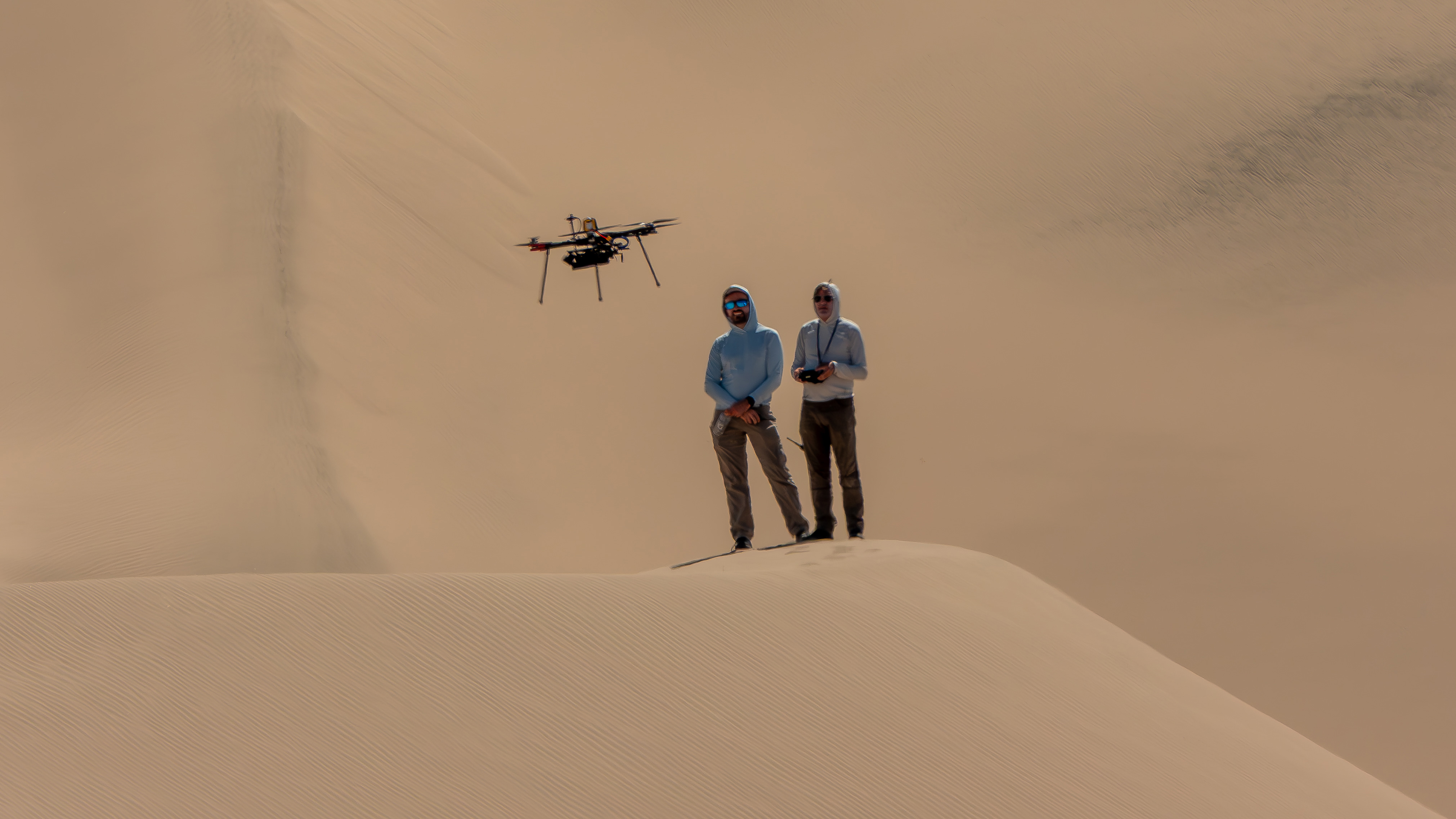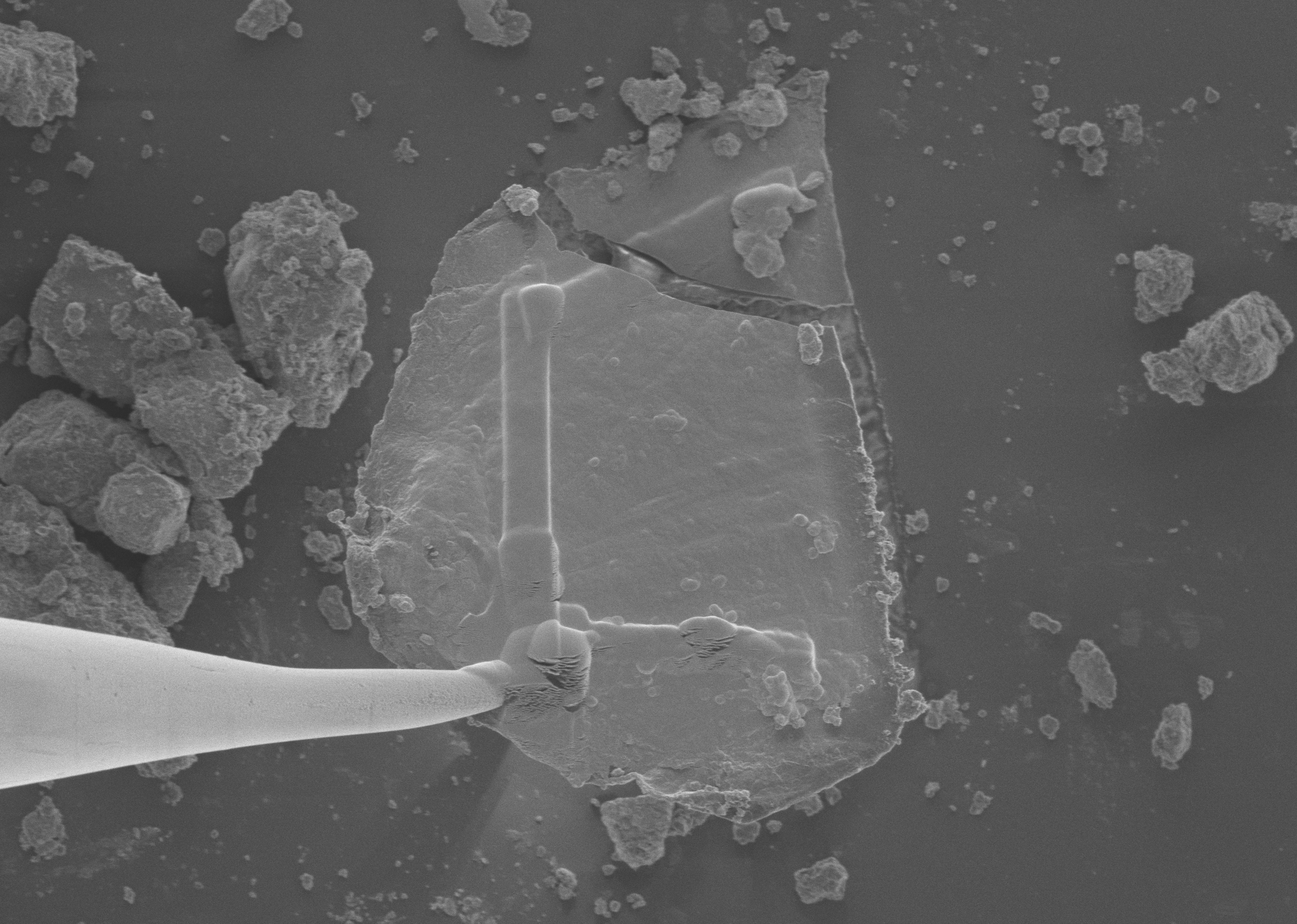
The week began with Cassini coasting out towards apoapsis in its steeply inclined orbit. As will be the case several more times during these final months, the spacecraft had a relatively close (~200,000 km) non-targeted flyby of Titan. The encounter gave Cassini a slight gravitational nudge that raised periapsis out into the diffuse Janus/Epimetheus (J/E) ring. Then, a few days later, for the 10th time Cassini swooped through the ring plan at the J/E ring and sped past periapsis. During this orbit, the 97th command sequence in the Saturn Tour, which began in 2004, wrapped up its execution. The 98th sequence then seamlessly began operating the robot explorer. Three more command sequences remain to be developed and uplinked before Cassini's Grand Finale end of mission in September.
Wednesday, Feb. 1 (DOY 032)
Cassini's Imaging Science Subsystem (ISS) controlled spacecraft pointing for one hour while it monitored the surface and atmosphere of Saturn's largest moon Titan. The Composite Infrared Spectrometer (CIRS) and the Visible and Infrared Mapping Spectrometer (VIMS) rode along. This was the start of a series of observations while Titan met up within 220,000 kilometers of the moving spacecraft. CIRS and ISS traded control of pointing for another 31 hours during the distant, non-targeted encounter. VIMS participated in all of the observations, and the Ultraviolet Imaging Spectrograph (UVIS) participated in some of them as well.
Thursday, Feb. 2 (DOY 033)
With the Titan observations completed, Cassini began seven hours of communications and tracking with Deep Space Network stations in Australia and Spain. These activities marked the completion of ten weeks of control by the S97 command sequence.
Friday, Feb. 3 (DOY 034)
Right on cue the S98 sequence, which was uplinked last week, took over. First, it carried out some engineering activities, and then had CIRS point to the strands of Saturn's C ring for six hours, while UVIS and VIMS rode along. Spectra obtained will help constrain models of the ring's composition and structure. Halfway through this observation, Cassini coasted through apoapsis, marking the start of Orbit #260.
Saturday, Feb. 4 (DOY 035)
CIRS next studied Saturn's inner A ring, again to constrain composition and structure, and also to compare its properties with other regions of Saturn's main rings.
Saturday, Feb. 5 (DOY 036)
Today, ISS watched the F ring for nearly 18 hours, covering more than one full orbit of the ring material all the way around Saturn; CIRS and VIMS rode along. The images will allow scientists to study the dynamics of the F ring, and its intriguing and complicated structures.
NASA's Astronomy Picture of the Day featured Cassini's take on Tethys today: https://apod.nasa.gov/apod/ap170205.html .
Monday, Feb. 6 (DOY 037)
As the spacecraft approached another rapid ring-plane crossing and periapsis passage, CIRS took advantage of the proximity to Saturn's rings and studied azimuthal variations in thermal emission of material in the Cassini Division, which separates the A and B rings; UVIS and VIMS rode along. With the current ring-grazing orbits, Cassini comes close enough to the Cassini Division that CIRS can isolate this 4,600-km wide component of the rings in its field of view.
Next, ISS spent 2.25 hours observing the dynamically complex region from the outside of Saturn's A ring out to the narrow F ring. With CIRS and UVIS riding along, ISS targeted the faint ringlets there, as well as the outer edge of the A ring with its surprising amount of structure. For the next 2.25 hours, ISS captured images of some density features in the C ring known as plateaus, with resolution as high as about one km per pixel. Structure should be visible that was only hinted at when Cassini first arrived at Saturn; CIRS and VIMS participated. Plateaus are described here: /resources/2797 .
With periapsis passage comes a flurry of science observations. First off, UVIS was prime for ultraviolet spectral imaging of the A ring, while CIRS and ISS rode along. The 1.75-hour observation began late in the day, and continued into early the following day.
One of the "stars of the show" in the Saturn system is the small, active moon Enceladus. It was featured as today's selected image: /resources/7597 .
Tuesday, Feb. 7 (DOY 038)
The RADAR instrument pointed at the rings for 1.7 hours while Cassini coasted through periapsis early today. Its task was a high-resolution ring scan at centimeter-long wavelengths. Next, VIMS recorded a 2.5-hour high-resolution scan of the rings as Cassini flew below them, with CIRS and ISS riding along. RADAR then resumed its radiometric measurements of the rings for 2.5 hours. Following this, ISS spent 2.2 hours re-acquiring some of the ring features known as "propellers" (http://go.nasa.gov/17oqTWF); CIRS rode along.
ISS next imaged the F and A rings for 4.2 hours at high solar phase angles, a geometry that highlights the fine-dust particle population in these rings; CIRS and VIMS rode along. The viewing geometry is illustrated here: http://go.nasa.gov/2kt3JHT .
VIMS finished up the week's science activities by observing a 3.7-hour occultation of the Sun as it passed behind Saturn's rings.
The DSN communicated with and tracked Cassini on nine occasions this week, using stations at all three of the DSN's locations: Australia, California and Spain. A total of 56 individual commands were uplinked, and about 2,035 megabytes of telemetry data were downlinked and captured at rates as high as 110,601 bits per second.
Wrap up:
Cassini is halfway through its set of F-ring-grazing orbits of Saturn, with a period of 7.2 days in a plane inclined 63.7 degrees from the planet's equatorial plane. The 20 orbits are nearly identical, with Cassini's nearest point at about 150,000 km, and furthest point at about 1.28 million km from Saturn. Speeds relative to Saturn at those points (periapsis and apoapsis), are close to 76,150 km per hour and 9,000 km per hour respectively.
The most recent spacecraft tracking and telemetry data were obtained on Feb. 8 using two of the 34-meter diameter DSN stations in Spain. The spacecraft continues to be in an excellent state of health with all of its subsystems operating normally except for the instrument issues described at http://saturn.jpl.nasa.gov/anomalies.
The countdown clock in Mission Control shows 220 days until the end of the mission.
This illustration depicts Cassini's path up to mid-day Feb. 7, 2017.
































